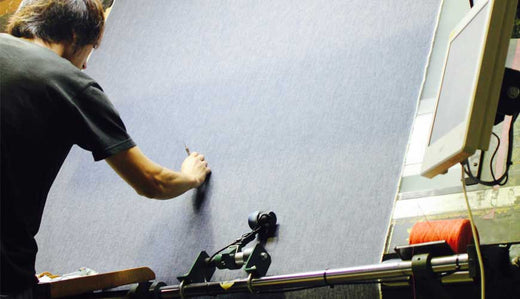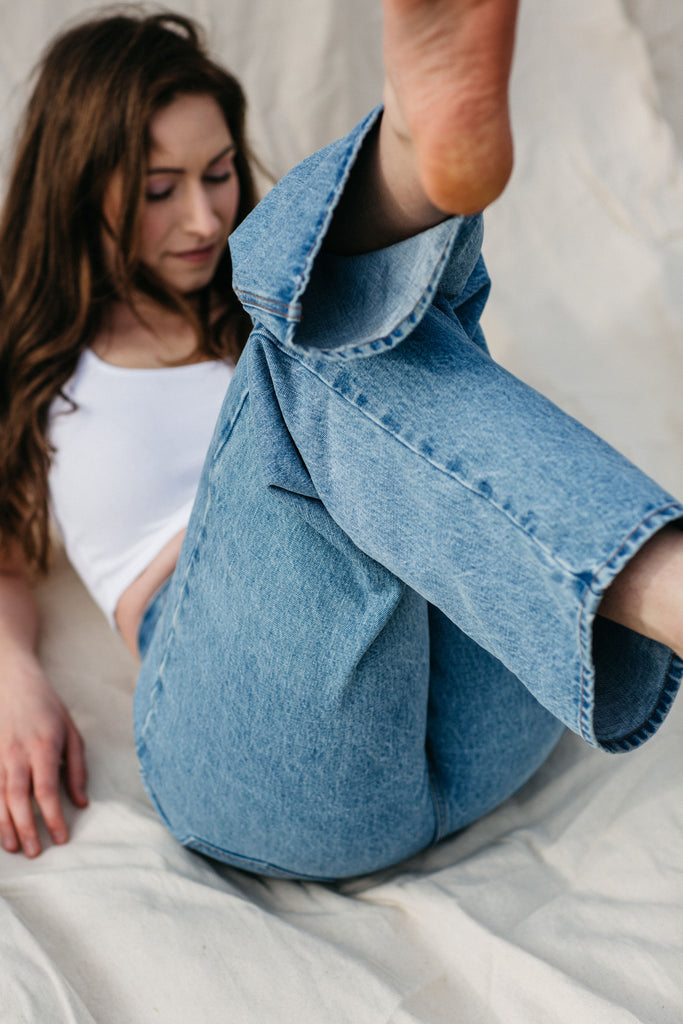The Craft of Making Denim

We’ve mentioned a few times that Japanese denim is considered the best in the world. This is why we’re using it to make our jeans. We discovered this world of Japanese denim while holidaying there several years ago. We found a cultural love for this wardrobe staple which saw its creation as a craft. There was a desire to take this widely mass produced and thus poorly made item and bring it back to its roots, of quality and durability. This resonated with us and our own personal endeavours of finding quality items in a world full of half thought out products, that were mass produced and cheaply made.
We connected with the Japanese desire to perfect details, maintain quality and celebrate the traditions of craftsmanship in weaving, dying and sewing. Learning about this love for denim on our trips there, planted a seed in us which eventually led to the creation of HERA Denim.


Years ago when jeans and denim production was first making a resurgence in Japan, they thoroughly studied original Levi jeans, sometimes retrieving them from old mining tunnels or purchasing them for obscenely high prices at auctions in order to dissect every detail of their creation. They studied and learnt old techniques of weaving denim whilst drawing on their own rich heritage and generational knowledge of textiles.
You see, there is a cultural tradition in Japan of perfecting one's craft. There is a deep respect given to those who dedicate hours, life times and generations to becoming expert craftsmen. This is reflected in the desire to revive the traditional methods of creating jeans. To rediscover the value of crafting beautifully woven and thoughtfully dyed denim. To almost, celebrate the time and consideration that goes into each step of the process.
Many of the denim mills in Japan have been creating textiles for hundreds of years. The mill who supplies our denim was established in 1917, and went full scale into denim production in 1985. They’ve brought their long and rich textile heritage, passed from generation to generation, and infused that with the making of denim
When making denim, it is important to understand the entire journey of the fabric; something we find Japanese denim artisans thoughtfully consider. Denim begins in what is called a raw state. The fabric is a dark indigo, the colour is uniform and often it is very stiff. The denim fabric is then cut out and then sewn into jeans. Originally, they were then worn to create fading - the indigo dye would gradually wear away and the fabric would gradually soften through just being worn. But most jeans today have already been faded and worn in through washing and fading techniques applied before they reach the shops. This is the journey of denim, and this is what needs to be considered when making denim - how it will wear over time or how it will fade. The artisan denim makers in Japan are looking for a finished result that creates character and a unique aesthetic. This can be found in less uniformity, softening of the denim, and a molding to the wearer's shape.
We strive to be denim experts here at HERA Denim, part of that is partnering with people that value craftsmanship and quality. We aim to bring you jeans to love and wear for years to come. The denim fabric is of course a huge and integral element in the creation of your jeans. We endeavour to work and partner with experienced craft people across all aspects of creating your jeans. From perfecting that fit, to the weaving of denim.






